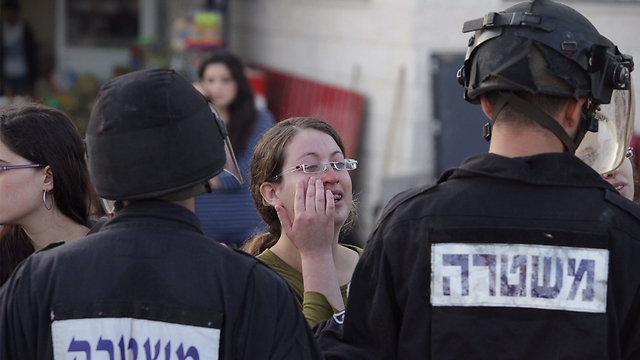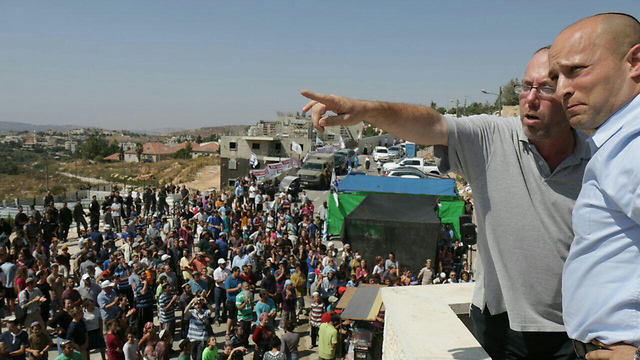
The battle in Beit El: What's the fight about?
High Court's order to destroy Draynoff buildings in West Bank community follows an ongoing litigation between State of Israel and a Palestinian petitioner over private land seized by the IDF in 1970.
Three years after the Six-Day War, a private piece of land north of Ramallah was seized for military purposes. Eight years later, the government approved the establishment of the Beit El community on that land.
Thirty-two years later, in 2010, Abd al-Rahman Qassem petitioned the High Court of Justice through Attorneys Michael Sfard and Shlomy Zachary of the Yesh Din human rights movement, claiming that some buildings in the western part of Beit El were built on private land which belonged to him. The buildings' construction was illegal, and that very year the Civil Administration issued an order to stop the construction work and demolish the buildings.
During the first High Court discussions, the government promised to enforce the demolition order by April 2012, but the order was not enforced. The petitioner asked the court to enforce the demolition order and the order to halt the construction of those homes in Beit El. The State then requested several extensions before implementing the orders, and later said it was considering a certain planning procedure in the area which might legitimize the buildings retroactively.

Then-Supreme Court President Asher Grunis did not accept the State's stance and ordered the demolition of the buildings, as they had been constructed illegally.
"There is no dispute that the buildings' construction on the petitioner's lands is illegal," Grunis stated in 2014. "In light of the appellees' repeated commitments to demolish the buildings, and because a suggested plan has not been submitted more than three years after the first petition was filed, I believe there is no room to accept the request to exhaust the planning procedure."
Justice Miriam Naor, today's Supreme Court president, stated as the minority opinion that the attempt to regulate the buildings through a planning procedure should be given another year. But the court did not accept her opinion and ruled that the buildings should be demolished within half a year.
Another High Court petition was filed in February 2015 by the entrepreneur who planned the buildings. He asked the judges to stop the demolition. President Naor criticized the State for the "changes" in its stance, and eventually ruled that the discussion was closed and the ruling could not be overturned.
"At first, the State promised to demolish the buildings and asked the court for time to do so. At a later stage, the State noted that there was a possibility for a planning procedure regarding the land the buildings were constructed on. And finally, the State asked for the court's permission to exhaust the planning possibility before implementing the demolition orders," Naor stated in her decision.
'Building on private land is a risk'
The State supported the petitioners' stance, claiming that the buildings' planning procedures had made progress in the past few months, and asked to leave the building untouched for another six months. President Naor did not accept the State's stance.
"Speeding up the planning procedures shortly before the end of the last date for the buildings' evacuation raises difficult questions," she noted.
The High Court eventually ruled that the case could not be reopened and rejected the petition.
Justice Naor was joined by Deputy Supreme Court President Elyakim Rubinstein, who wrote in the ruling that "at the end of the day, a person who builds on private land does it at his own risk and takes the risk, which can be prevented in advance.
I regret the litigation, I regret the political touch involved in the matter due to the circumstances we live in, and I regret an outcome which could have been prevented, and I'm afraid there no escape from it."
The State fulfilled their obligations on Wednesday, but destroying the buildings. The Yesh Din movement says that the buildings should not only be destroyed, but that no reconstruction can be performed on the land.











